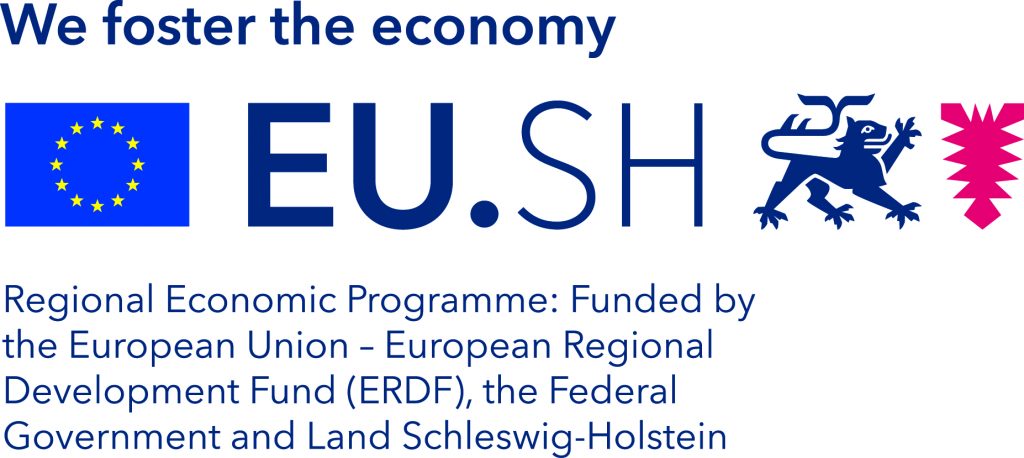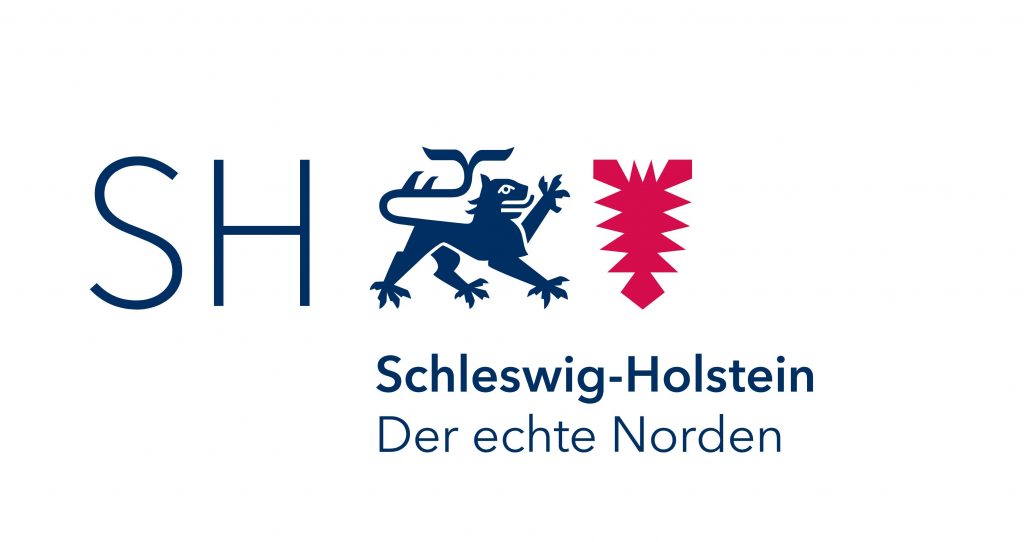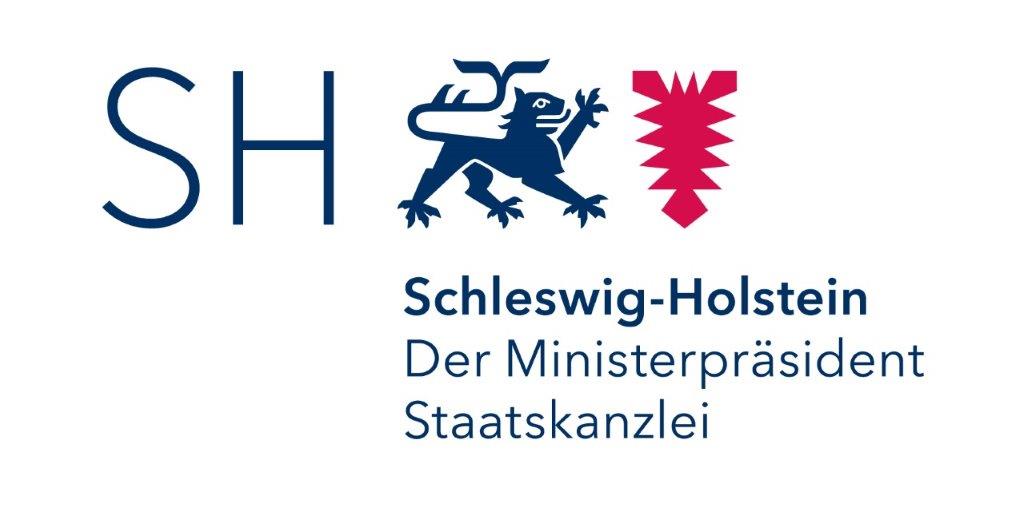The WeipX project was launched in July 2022 with the aim of developing a very precise, location-specific feed-in forecast for the potential energy that can be generated by a wind turbine or wind farm at a geographically defined location.
The project of NAECO Blue is supported by WTSH and funding from the European Regional Development Fund (ERDF). We are happy to got this important partners to enable such a project. The results will be presented at the Husum Wind 2023.
A feed-in forecast is a forecast that predicts energy generation for the next 48 hours in 15-minute steps. Once the forecast has been created, it should be updated regularly and provide a forecast for the next 48 hours.
The need for these forecasts is irreplaceable, especially with the highly fluctuating generation of renewables, solar and wind. The forecasts are needed to ensure security of supply and safety in the grid and to avoid a collapse due to oversupply or undersupply. Particular attention must be paid to accuracy, as only a sufficiently accurate forecast can be considered for planning and energy supply.
At the start of the WeipX project, there were few adequate models that could provide scalable solutions for large portfolios and location-specific forecasts. NAECO Blue had already gained a lot of experience in the field of feed-in forecasts for solar energy and had developed a concept that now had to be proven for the important energy source wind.
The 15-month WeipX project was carried out by a team of meteorologists, data scientists and electrical engineers. The aim was to develop an AI-supported forecasting model, test it on a wind farm and then present it at the Husum Wind Messe 2023. These plans were met, and the first customers were able to celebrate the primary.

In this project live data is incorporated to get the best results. After collecting the wind farm data. Data of each turbine is handled separately. The data behavior of all wind turbines is analyzed. The wind farm was new, so the data was of few months. Some of the wind turbines were not stable at the firsts months Besides analyzing the wind production data other influencing factors like weather, location, and wind farm properties (calculating the Wake effect) are also gathered and analyzed. Correlation graphs shows how much individual features having an effect on the power production. Out of different weather sources we managed to create a site-specific weather forecast and applied this, with feature weightings from the correlation matrix and direction of wind and gusts in the AI modeling process. In addition a pre-processing step for the data is done, to remove all possible outliers values from the wind turbine’s observations or from the weather data.

After analyzing and preprocessing the data a learning base is prepared to apply the AI models. Starting with the conventional ML models‘ complex neural networks are also applied and evaluated step by step. On this live data some performed better than the other algorithms and returned very low NRMSE´s. NRMSE is the normalized root mean square error which is the standardized measure to evaluate the AI models results.
Once models are trained, tested, and evaluated. The AI is integrated to collect the live data of all the wind turbines from sftp server. Prepare it for applying the LSTM model and generating the forecast of 48 hours on 15 minutes interval after every 3 hours and send it to client. The system is also fairly safe or reliable due to the integration of AI. The 1-week result comparison against the actual production of a turbine is shown in the graph given below:
This figure is showing how the forecast is following the real production. Important is to forecast the ramps which means the change from nearly no data to a lot. Traders need to know when this is happening. The figure is showing that the forecast was fulfilling this and even got the somehow same behavior then the real production. At this point we knew that it is time to test the live forecast on a long-term test.
The final test was scheduled for around three months, and we performed it in this manner. These final tests run has two parts. The first is to check that the whole forecasting system is running smoothly without crashing or not. The second round is to validate the forecast that either the forecast we are sending to the client is trustworthy for trading or not and in this step, we will compare our system generated forecast with the actual wind farm data and check how much it differs. Based on the validation results we will decide whether we should again go to the AI modeling step or not. After the test period we analyzed errors while the test run was generating files and the accuracy of the forecast against the real production. Due to the optimization phase before, the code was running smoothly, and the forecast validated meet our goals. The forecast was ready to be promoted on a business level. Small changes were integrated over the summertime and we had do adjust some weather data issues together with an ongoing automation in the cloud to fulfill our scheduled milestone, presenting the forecast at Husum Wind 2023.
Husum Wind 2023
The final Milestone, presenting the forecast to the community was a big success.
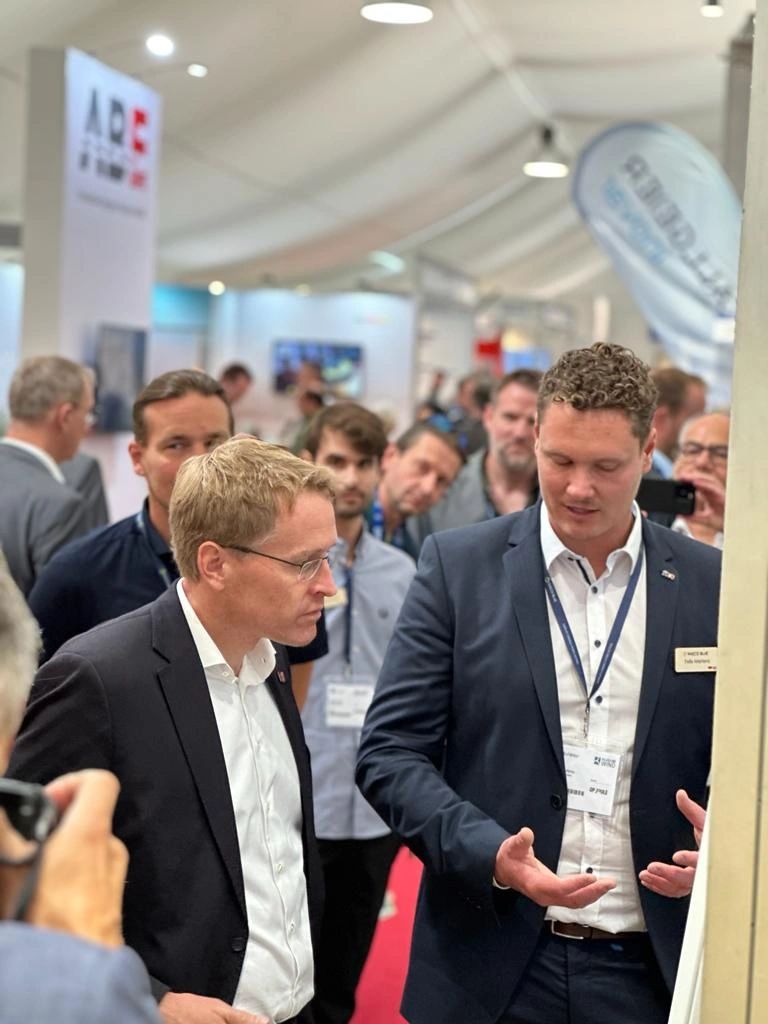
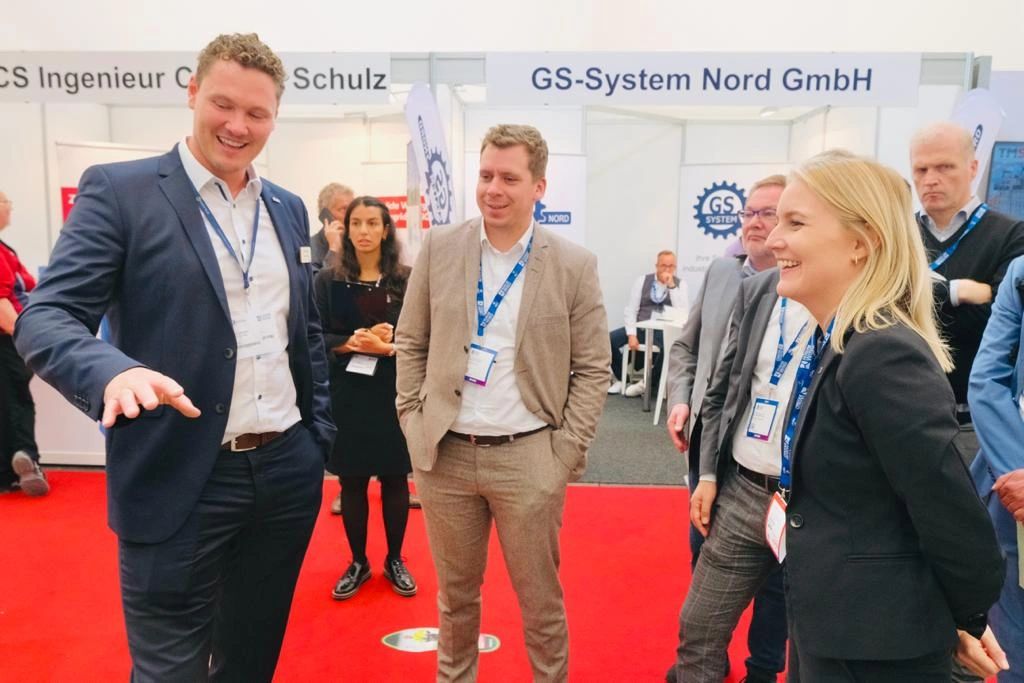

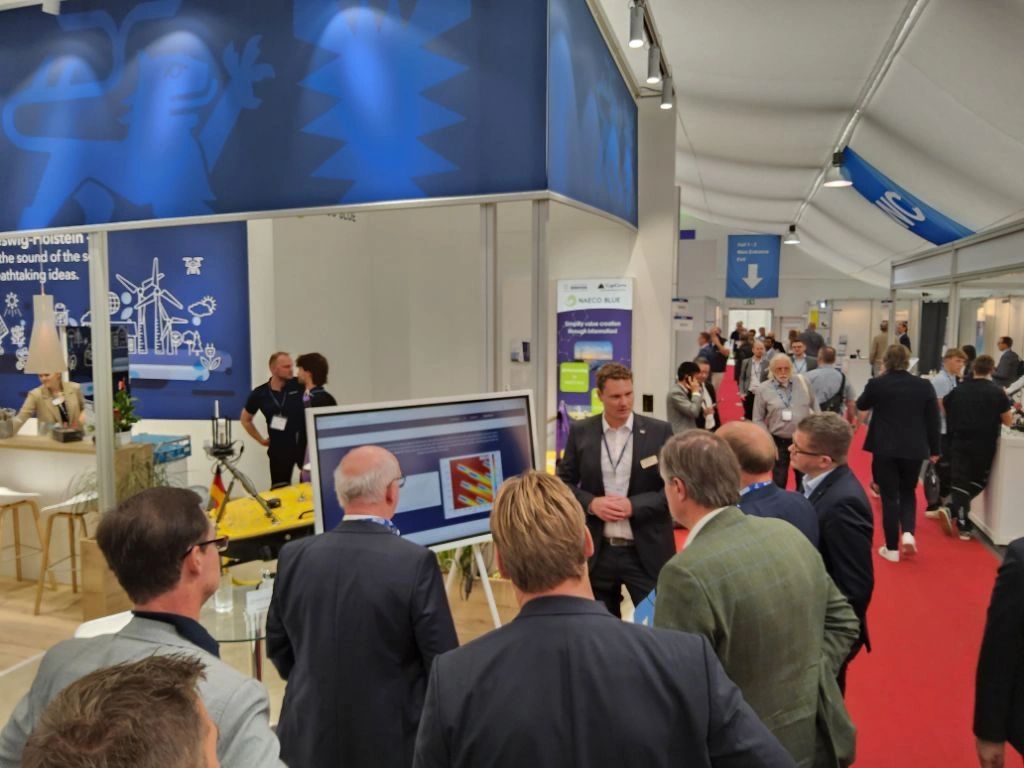
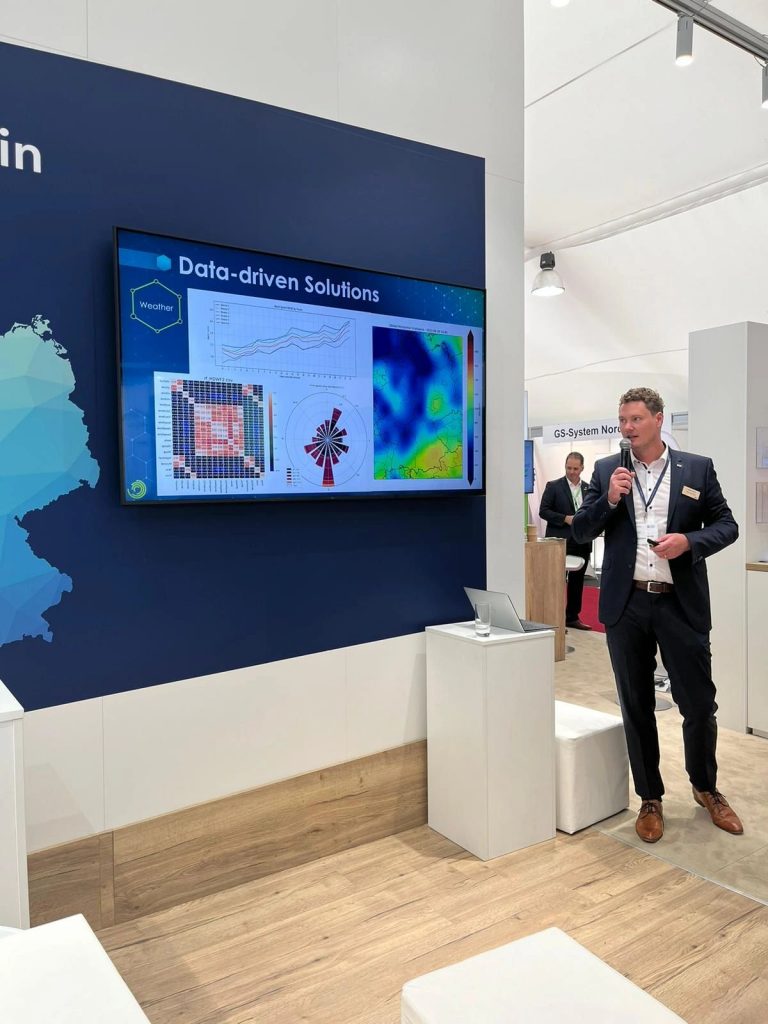
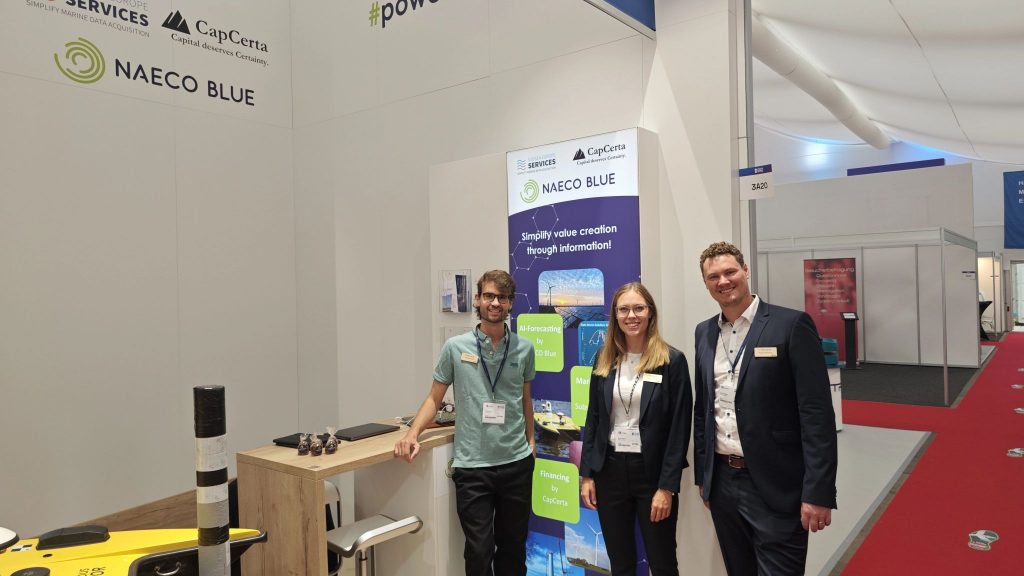
The presentation of the results and the forecast itself on the international and leading fair for energy named Husum Wind was a blast. After intense preparation and marketing, we were able to show the results at the fair. We recognized a very high interest from companies and politicians from all over the world. We could even discuss first contracts related to wind forecasts. After the fair we converted more or les directly one visitor to a customer. They booked the wind forecast and it is supposed to start at 1st of January 2024 with a one-year license.
After the presentation of the schedule, as well as the various adjustments and learnings in the course of the project, we can proudly say that we were able to develop the goal of a very precise feed-in forecast for wind energy. During the 15 months, all planned work packages were completed and documented. Furthermore, it was possible to meet the deadline with Husum Wind 2023 in order to be able to present the forecast there. The project plan was adhered to. It was only necessary to do a little more than expected at the beginning during development, as the available data and therefore the AI training sessions were more time-consuming than expected. On the other hand, the test phase at the beginning of 2023 was able to be carried out with fewer staff than planned.
The personnel planning was hardly changed. The funding made it possible to intensively investigate this important topic and adapt it to the conditions. The comprehensive work not only enabled us to build up more know-how about AI, environmental data and the interrelationships between scalable data models, but also to consolidate this in the Lübeck area. NAECO Blue now sees itself much stronger than other IT service providers and will continue to promote the use of AI in the energy industry. The presentation of the results at the Husum Wind Messe 2023 in front of an international audience and local politicians such as Daniel Günther, Dirk Schröter, Julia Carstens and Joschka Knuth not only generated international interest, but also significantly strengthened the local network. The presentation of live forecasts at the NAECO Blue stand impressively demonstrated the accuracy of the forecasts and allowed direct use cases to be discussed. This was further underpinned by the specialist presentations given.
Renewable energies are an important economic factor, especially in Schleswig-Holstein, and it is impossible to imagine life without them. Through the WeipX project, we have entered cooperation with various players in Schleswig-Holstein, Lower Saxony and Hamburg. We continue to favor cooperation with companies from Schleswig-Holstein. Ultimately, the solution we have developed will enable us to offer added value through AI-based forecasting not only in individual federal states, but also in national and international areas, thereby supporting and strengthening the energy transition and the sustainable development of the electricity supply.
